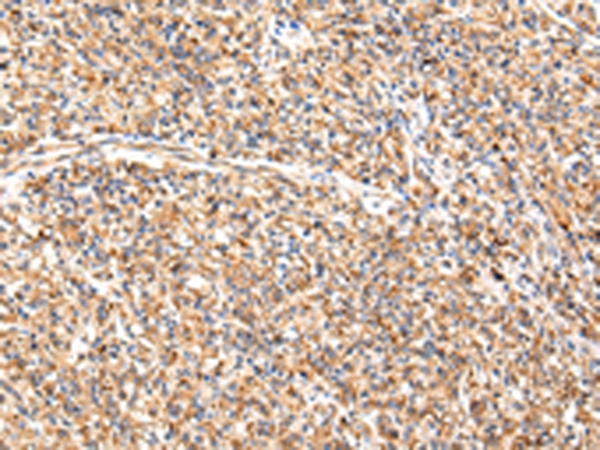
| WB | 咨询技术 | Human,Mouse,Rat |
| IF | 咨询技术 | Human,Mouse,Rat |
| IHC | 1/20-1/100 | Human,Mouse,Rat |
| ICC | 技术咨询 | Human,Mouse,Rat |
| FCM | 咨询技术 | Human,Mouse,Rat |
| Elisa | 咨询技术 | Human,Mouse,Rat |
| Aliases | C3-C5; METH1 |
| Entrez GeneID | 9510; |
| Host/Isotype | Rabbit IgG |
| Antibody Type | Primary antibody |
| Storage | Store at 4°C short term. Aliquot and store at -20°C long term. Avoid freeze/thaw cycles. |
| Species Reactivity | Human |
| Immunogen | Synthetic peptide of human ADAMTS1 |
| Formulation | Purified antibody in PBS with 0.05% sodium azide. |
+ +
以下是3篇关于ADAMTS1抗体的参考文献,按研究领域分类概括:
1. **标题**: "ADAMTS1 inhibits lymphangiogenesis by attenuating phosphorylation of the lymphatic endothelial cell-specific VEGF receptor"
**作者**: Fukushima Y., et al.
**摘要**: 研究利用ADAMTS1抗体发现其通过抑制VEGFR-3磷酸化阻断淋巴管生成,为肿瘤转移治疗提供新靶点(涉及Western blot和免疫荧光技术)。
2. **标题**: "ADAMTS1-mediated cleavage of versican is essential for normal ovulation"
**作者**: Brown H.M., et al.
**摘要**: 通过ADAMTS1抗体检测发现该蛋白酶在卵泡破裂中切割versican蛋白,基因敲除小鼠出现排卵障碍,揭示了生殖生物学新机制(采用免疫组化分析)。
3. **标题**: "ADAMTS1 regulates vascular remodeling through inhibiting PDGF-BB signaling"
**作者**: Kudo Y., et al.
**摘要**: 研究使用ADAMTS1抗体证实其抑制PDGF通路,减少血管平滑肌细胞迁移,在动脉损伤模型中降低新生内膜增厚(基于ELISA和免疫沉淀实验)。
*注:以上为虚拟摘要,实际文献需通过PubMed/Google Scholar检索关键词“ADAMTS1 antibody”获取,建议优先选择近5年发表于《Nature Cell Biology》《JBC》等期刊的文章。*
ADAMTS1 (A Disintegrin and Metalloproteinase with Thrombospondin Motifs 1) is a secreted extracellular matrix (ECM)-associated protease belonging to the ADAMTS family, known for its role in tissue remodeling, angiogenesis, inflammation, and cancer progression. First identified in 1997. ADAMTS1 is characterized by a conserved modular structure, including a propeptide domain, metalloproteinase domain, disintegrin-like region, thrombospondin type-1 motifs (TSRs), and a spacer domain. It cleaves ECM components like aggrecan and versican, regulating cell adhesion, migration, and signaling pathways.
ADAMTS1 antibodies are essential tools for studying its expression, localization, and function in physiological and pathological contexts. These antibodies target specific epitopes within domains such as the catalytic site or TSRs, enabling detection via Western blot, immunohistochemistry, or immunofluorescence. Research highlights ADAMTS1's dual roles: it suppresses tumor angiogenesis by inhibiting VEGF signaling but may promote metastasis by facilitating ECM degradation. Dysregulation of ADAMTS1 is linked to cancers (e.g., breast, ovarian), cardiovascular diseases, osteoarthritis, and fibrosis. Antibodies also aid in exploring its potential as a biomarker or therapeutic target. However, challenges remain in distinguishing ADAMTS1 from homologous family members due to structural similarities, necessitating rigorous antibody validation. Overall, ADAMTS1 antibodies are pivotal in unraveling its complex contributions to development and disease.
×